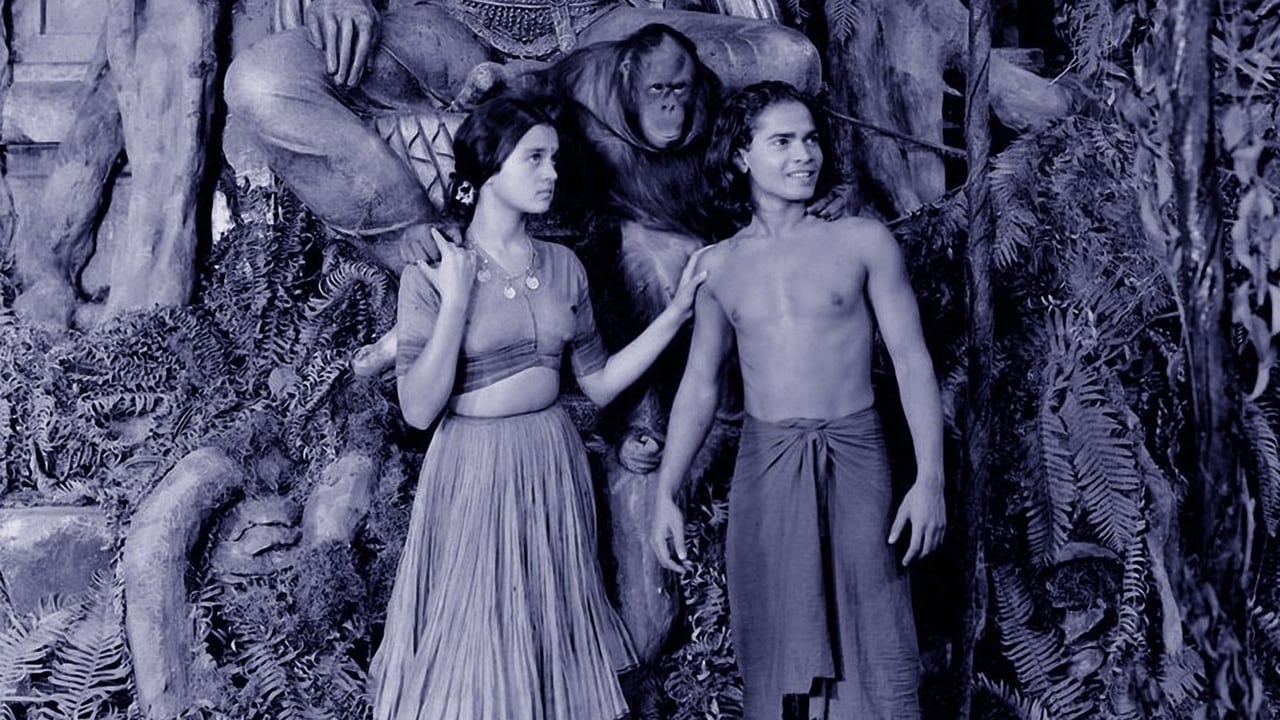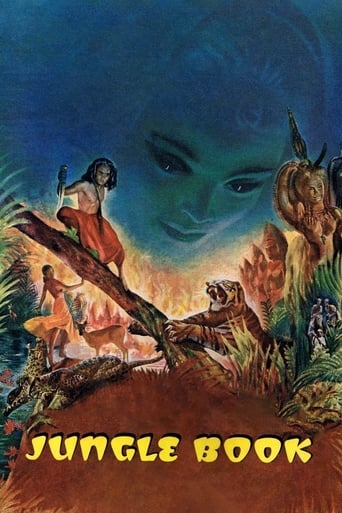

disgusting, overrated, pointless
... View MoreClever and entertaining enough to recommend even to members of the 1%
... View MoreThe story, direction, characters, and writing/dialogue is akin to taking a tranquilizer shot to the neck, but everything else was so well done.
... View MoreI enjoyed watching this film and would recommend other to give it a try , (as I am) but this movie, although enjoyable to watch due to the better than average acting fails to add anything new to its storyline that is all too familiar to these types of movies.
... View MoreCopyright 13 April 1942 by Alexander Korda Films, Inc. Released through United Artists. A Zoltan Korda film. Presented by Alexander Korda. New York opening at the Rivoli: 4 April 1942. U.S. release: 3 April 1942. U.K. release: 5 June 1942. Australian release: 7 January 1943. 9,521 feet. 106 minutes. Copyright title: RUDYARD KIPLING'S JUNGLE BOOK.SYNOPSIS: Wolf boy is forced to lead a trio of evil villagers to a king's treasure chamber in a lost city.NOTES: Negative cost: Sterling £250,000.Nominated for the following Academy Awards: Best Color Cinematography (lost to Leon Shamroy's The Black Swan); Best Music Scoring of a Dramatic or Comedy Picture (lost to Max Steiner's Now, Voyager); Best Art Direction in Color (lost to My Gal Sal); Best Special Effects (lost to Reap the Wild Wind).COMMENT: The dialogue is atrocious and Mr Calleia gives an especially hammy performance, even affecting a ridiculously phoney accent (on top of his normal accent, would you believe?) which he was evidently persuaded to drop half¬way through the film. His co-conspirators, Puglia and Qualen, are upon us at this point - and they are almost equally appalling. These two do not figure in Kipling's stories, and Stallings has even introduced an old vaudeville wheeze (the barber places his foot over a dropped coin) to keep them occupied.The rest of the principal players, led by the redoubtable Sabu (who is in fine form and seems to do all his own stunts) are somewhat more capable, though hampered too by the dialogue. It must be admitted that Stallings has lifted a fair amount of this straight from Kipling. It reads more fluently than it sounds. But it doesn't really matter. For Jungle Book has four or five things going for it that elevate it to a pantheon of artistic achievement.It's difficult to decide between the music and the cinematography for first place. Jungle Book is one of the finest examples of Technicolor photography I've ever seen. The colors positively glow with such artistry as impart to forest and animals a three-dimensional life. The music is undoubtedly the most stirring score Rosza ever composed. He had the good judgment to utilize it (with a minimum of adaptation) for his famous "Rudyard Kipling's Jungle Book Suite" (a recording originally issued on 78 rpm with Rosza conducting the Victor Symphony Orchestra, and narration by Sabu. I prefer the later version: Rosza conducting the Frankenland State Symphony Orchestra, with Leo Genn narrating).Add to the music and photography, Vincent Korda's truly magnificent sets and some spectacular animal footage directed by Andre De Toth, and you have at least four unimpeachable reasons why, despite the occasional clumsiness of dialogue, acting and direction, Jungle Book is a richly endowed masterpiece.
... View MoreI wanted to watch this movie from long, and the movie was on my DVD shelf from past since June 2011, right when i heard about the protagonist on a local newspaper. Sabu, who hails from Mysore, India was the first Indian to make it big in Hollywood. Yet, his descendents back in India are leading a poor life. The movie should be one like a King Kong of those time. The screenplay is realistic, you would find the movie to be an extraordinary being it made 70 years ago when there were no computers to graphic. My little nephew like the movie when the wild animals were there!The film is also a mixture of Indian Culture, it again proves that India is a land of Wonders! Those traditional beliefs, which oppose people movements, those supernatural guards all just elevate your thinking on India. This is be true even now in India, as there was vast treasure found recently beneath the temple. You can call it an amazing treasure hunt movie.One suggestion, i saw as a VHS print, but nowadays DVDs are available. Check in a DVD to view in a better quality.
... View MoreThe last time I watched this film on television was quite a few years ago, and the public domain print was blurry and garish. And so, I really didn't care for the film. Tonight it was on TCM and I thought I'd see if the print was any better. Wow...what a wonderful improvement! The color is still a tad strong, but you know what Technicolor was like in the old days. But this is quite good, and the clarity is perfectly sharp.The first 10 minutes of the film is not really part of the plot, but some beautiful wildlife photography...I guess you could say the jungle book. I'm not quite sure just how wild the wildlife was, but the photography of it is really, quite striking.The part of the story where Mowgli is adjusting to life as a human are quite interesting, and it portrays well how people see good and evil when something strange comes along. I rather enjoy the two performances that are key in this part of the film -- Sabu and Rosemary DeCamp, a much underrated actress.Of course, greed is an important aspect of the story, although there is an odd mix of SE Asian and Indian iconography in the film...but so what...it's all in good fun. The climax of the story is the jungle fire, and it is simply stunning.This is a remarkable film for its time, and well worth watching.
... View MoreAs a child, I loved this 1942 film Jungle Book. As a 20-year old adult, I still do, my favourite version of the story alongside the less faithful but just as fun 1967 Disney film. As with all Korda Brothers films(The Four Feathers being my personal favourite), the film is full of beautiful scenery and cinematography as well as an exotic atmosphere. Miklos Rozsa's score is suitably stirring with an authentic touch, while the story is exciting and amusing with a real adventurous streak about it and the pace not dragging too much. The jungle animals look great and are colourful characters in their own right, and the film is lovingly directed as always. Sabu is a likable and athletic lead, Joseph Calleia is terrific as Buldeo and Rosemary De Camp is a sympathetic mother figure. My only complaint is the romance, which was not as developed as it could have been. Overall though, I still love this film and still thinks it holds up today. 9/10 Bethany Cox
... View More